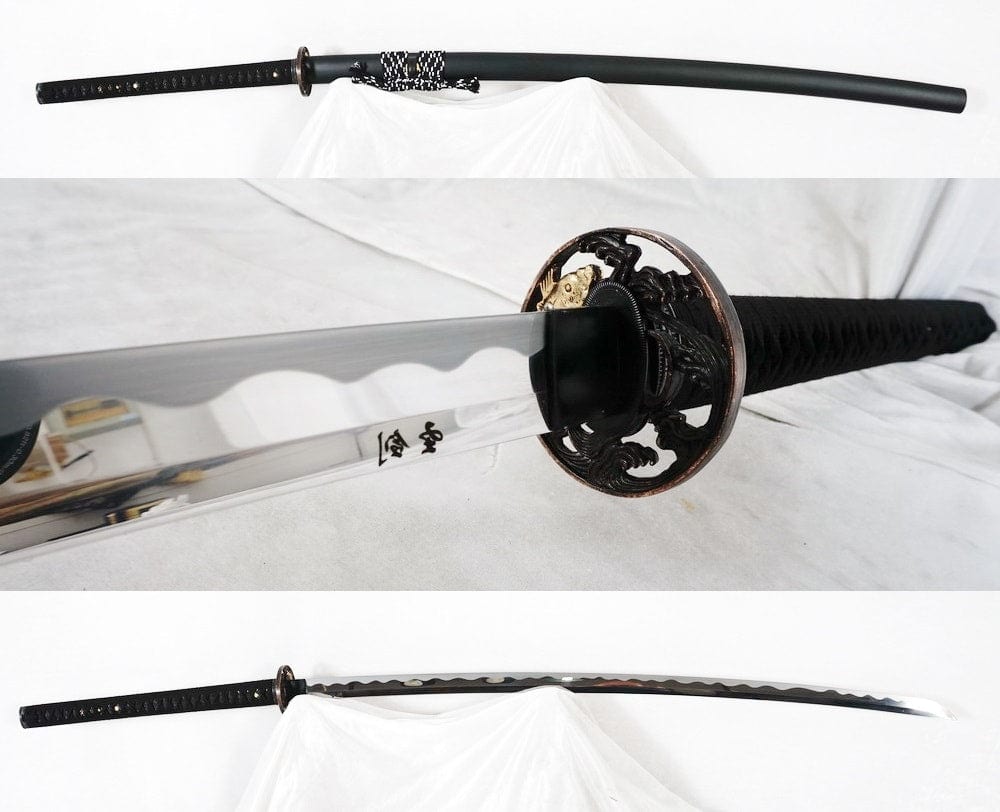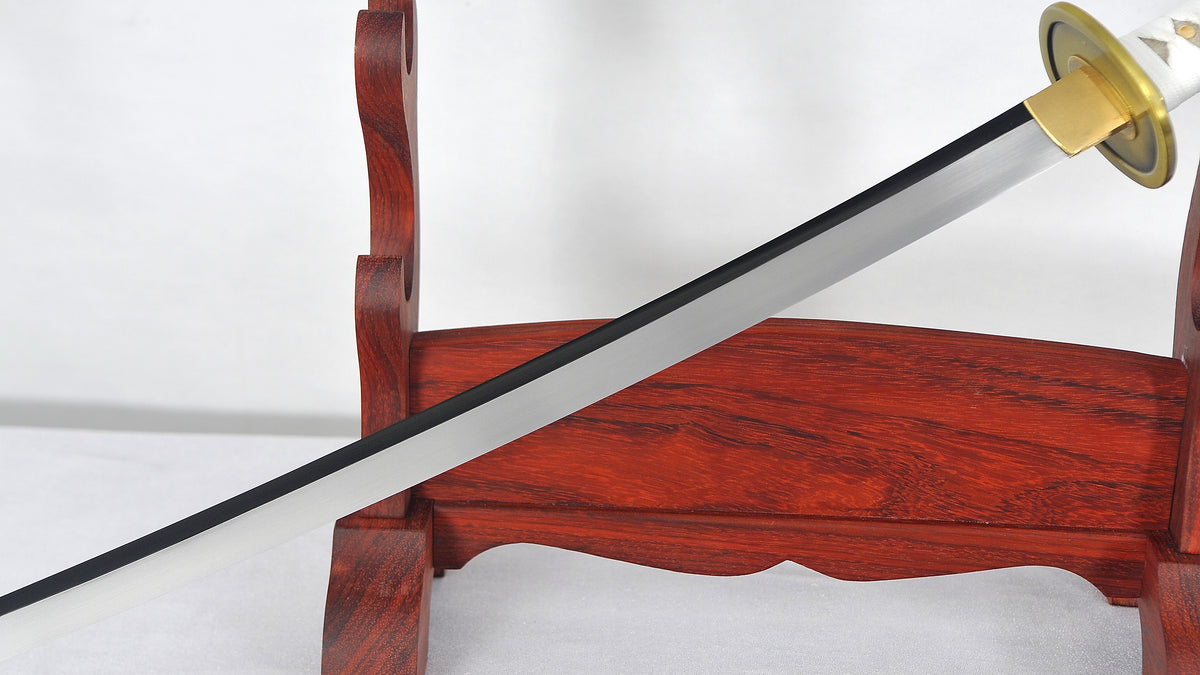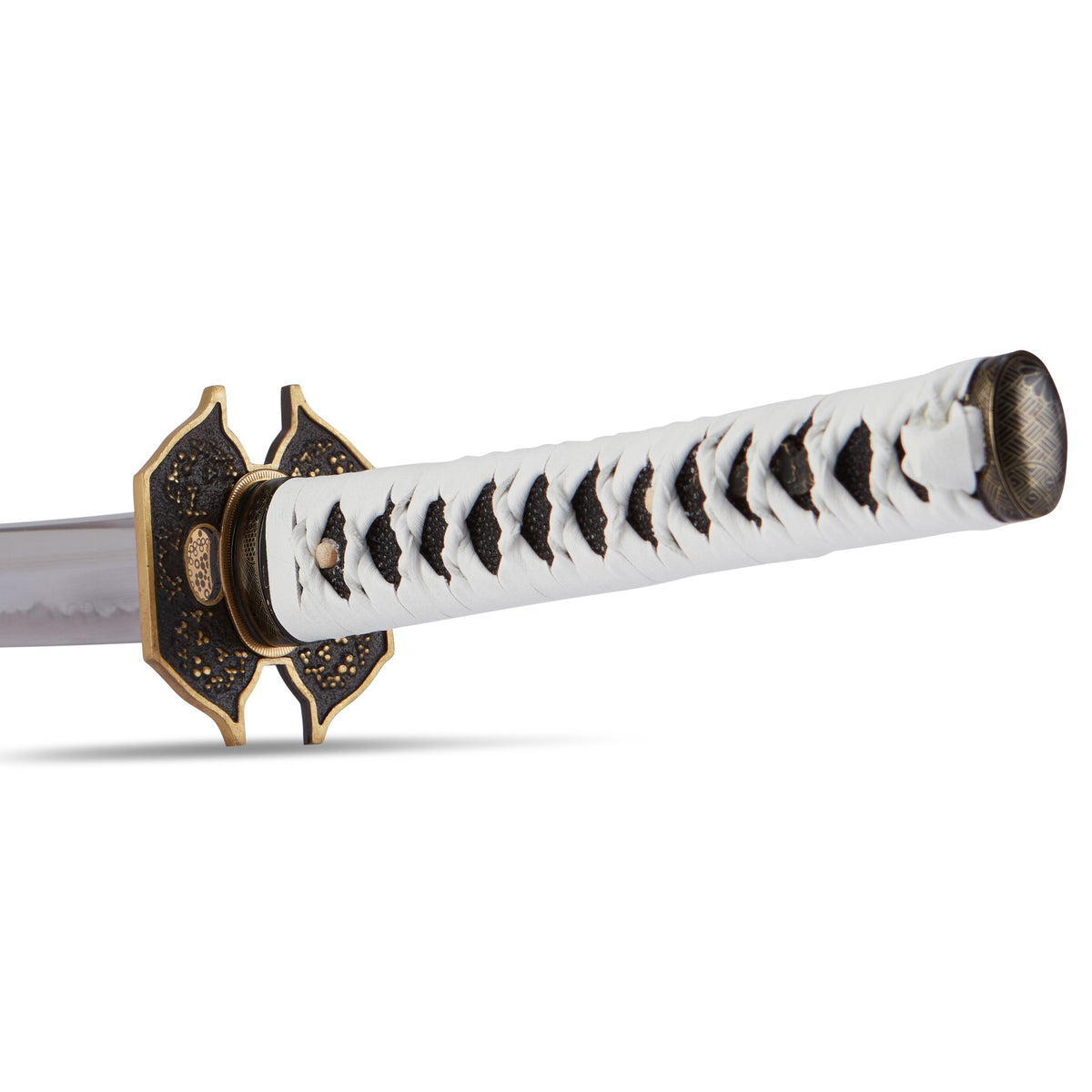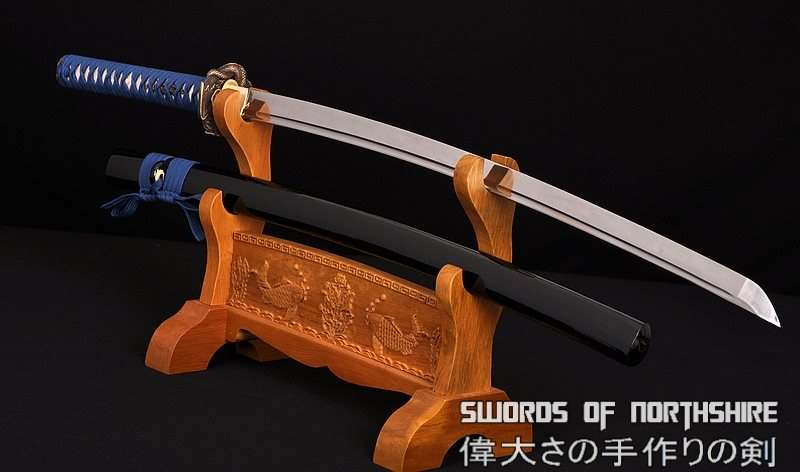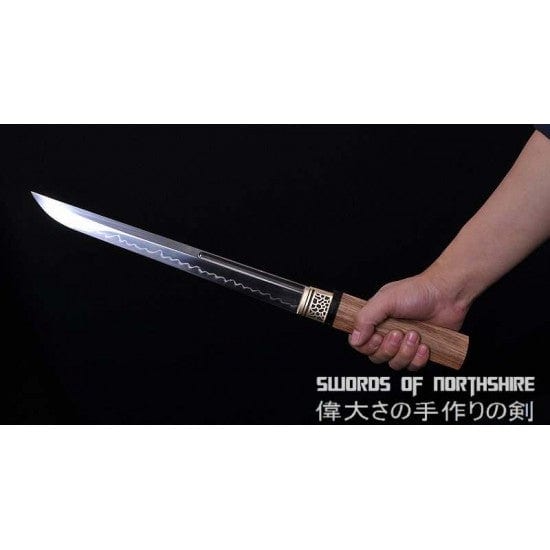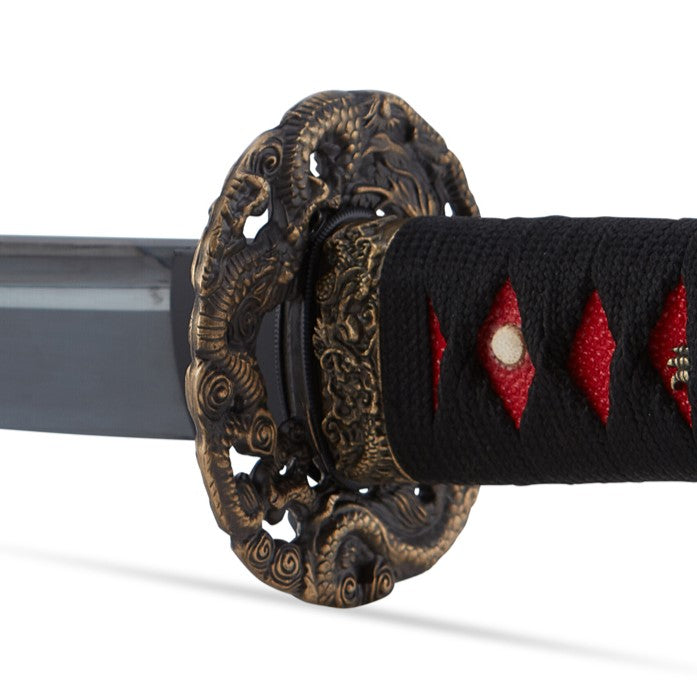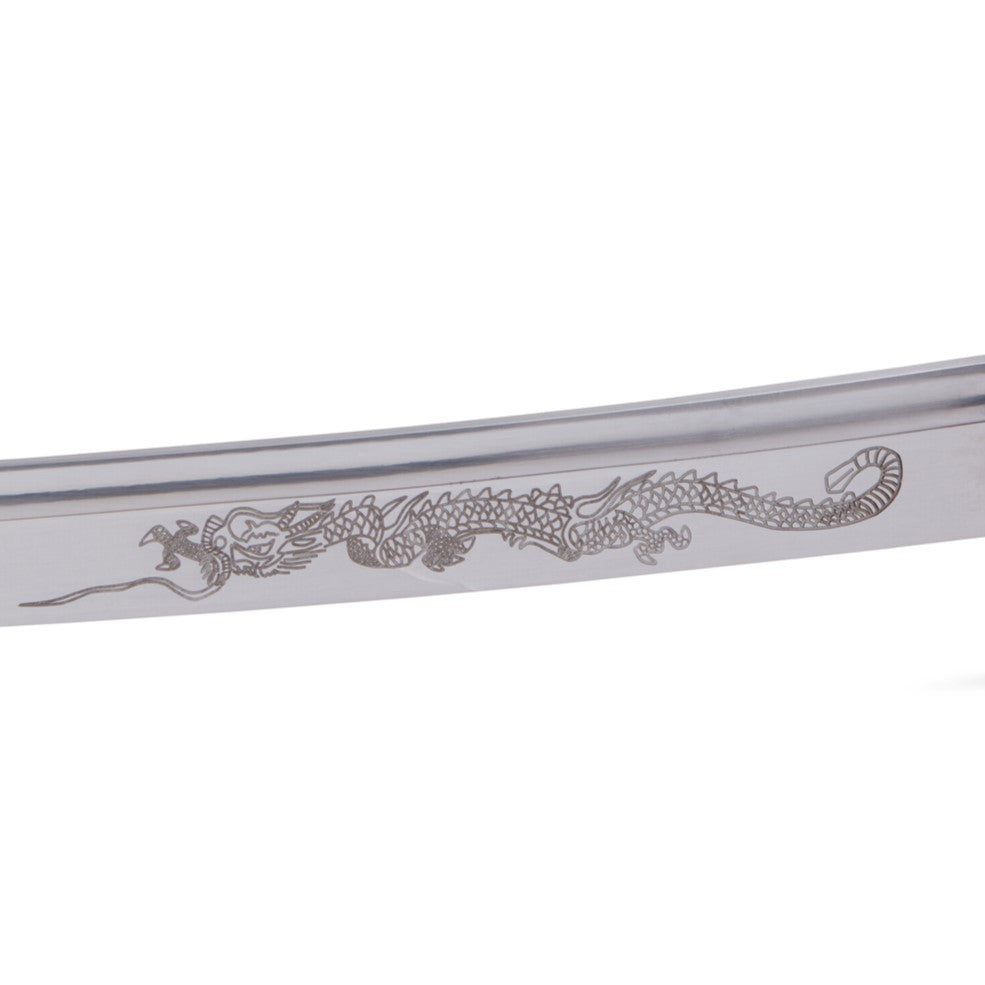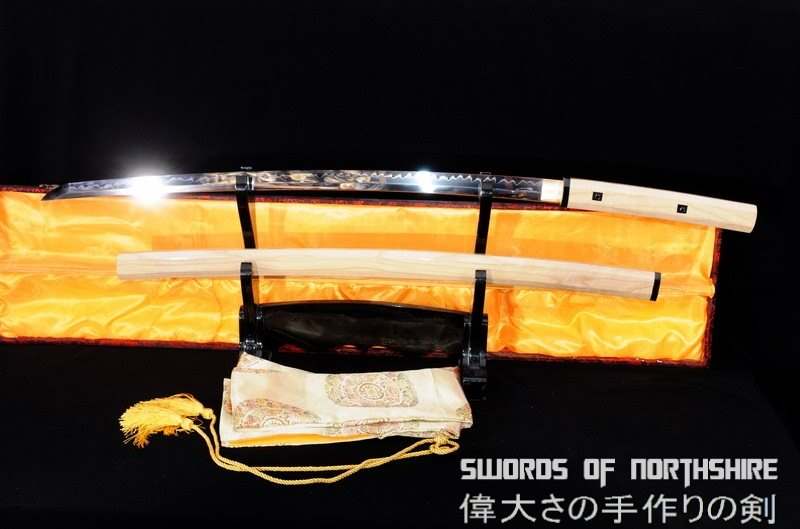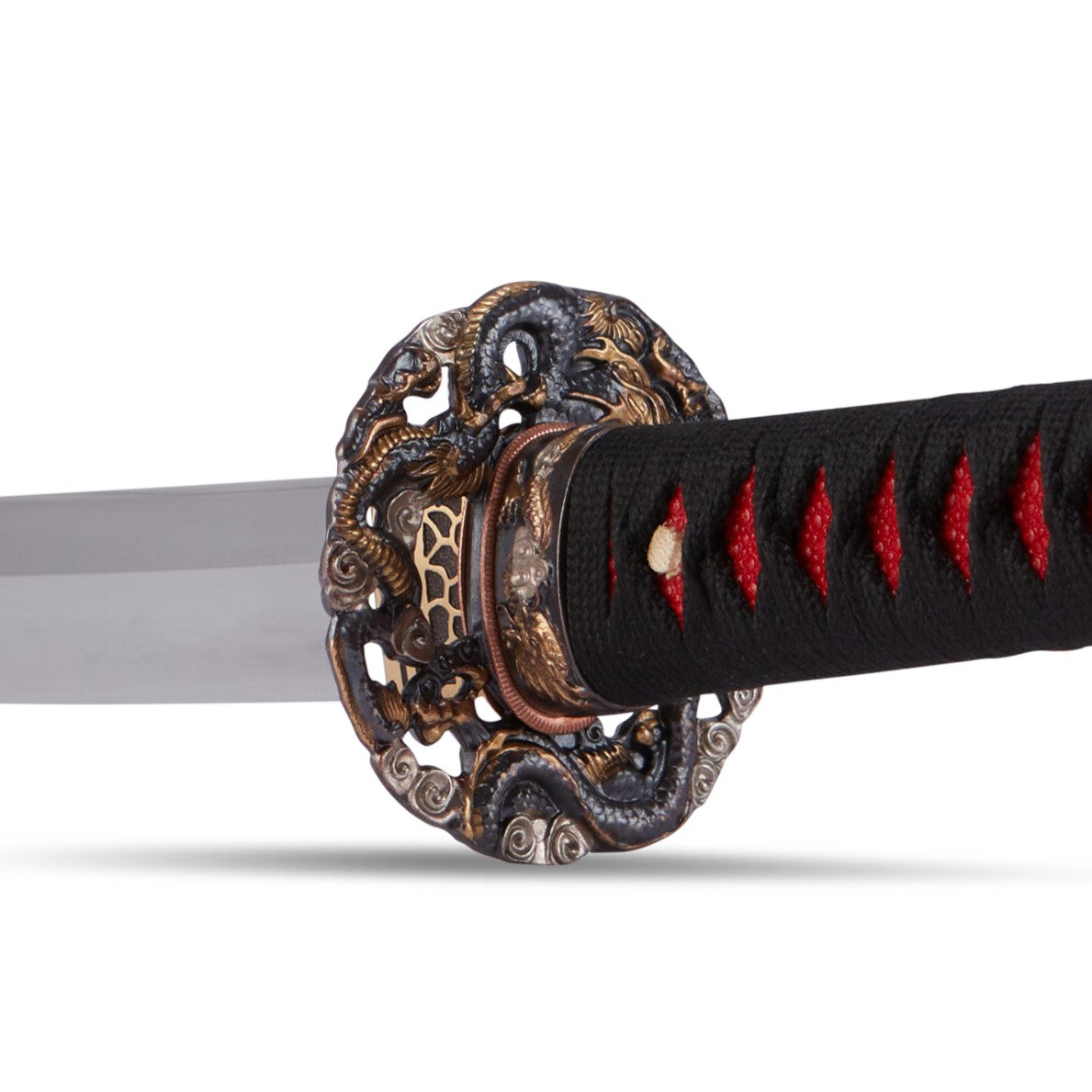Masamune - Japan’s Greatest Swordsmith

In the centuries which have passed since he lived and worked, Gorō Nyūdō Masamune’s skills as a master craftsmen have granted him almost mythical status. He was the most famous swordsmith of medieval Japan, and perhaps of all time. His skills are appreciated most of all by today’s master swordmakers who know how much skill is required to produce the perfect blade. The question is, can the centuries old skills of Masamune be recreated today?
Through each extraordinary stage of the forging process, we can reveal what made Masamune a supreme master. And by learning how his swords were used, how they could spell instant death, we could understand why they were prized above all by the samurai who wielded them.
Masamune’s Japan in the late 13th century was a land where fighting skills were of vital importance. Just across the sea of Japan, a huge Mongol army was poised, ready to strike. The Mongols at that time, under Kublai Khan, had sent emissaries to Japan demanding tribute. The Japanese treated them rather harshly, beheading several of them and having the severed heads delivered back to them. Of course the Mongols were not too happy about this.
In 1274 the Mongols invaded, ravaging large areas of western Japan, before a storm known ever since as the Kamikaze, or divine wind, wrecked the invasion fleet and saved the nation. Seven years later, the Mongols returned. Unable to find any suitable landing beaches due to the walls, the fleet stayed afloat for months and depleted their supplies as they searched for an area to land. After months of being exposed to the elements, the fleet was destroyed by yet another typhoon. The Mongols never attacked Japan again, and more than 70,000 men were said to have been captured. We can be certain that, along with all Japanese, Masamune would have offered thanks to the gods.

Kamikaze - Mongol ships being destroyed by the divine wind
At Kamakura, just south of Tokyo, Japan’s finest swordmakers worked around the clock. The young swordsmith realized he could turn the traditional cavalry sword, the long thin tachi, into a much more fearsome weapon. This became the model for samurai swords ever since. During the Heian era (year 794 to 1185), swords had a deep curve, and the kissaki was smaller. Once the Mongol invasion took place, the samurai had a need to use their swords to cut through armor. As a result, the tip of the samurai sword became longer so it could be used to pierce tough leather armor. The curvature of the sword, which was based more towards the hilt, changed so that the curve was pronounced in the middle of the blade, giving it a much more even curve which is far better when fighting on foot. Masamune contributed to the shape and function of the new samurai sword.

Tameshigiri, or test cutting, was traditionally performed on live prisoners. The prisoner was often tied up or hung from a hook. Certain areas of the body would be used for test cutting to test the strength of the sword. This practice was later replaced with cutting bamboo. Bamboo resembles the vertebrae of a human body. In order to cut bamboo, you form must be strong and precise. Fresh, green bamboo is required, since the surface more closely resembles the flesh of a human.
The creation of every true samurai sword begins the same way, with a process developed even before the time of Masamune. The method of smelting devised in ancient times has changed little over the centuries. The steel traditionally used for swordmaking is smelted from a black sand called Satetsu, naturally eroded from iron ore bearing rock and recovered from stream beds. Smelting takes place in a clay trough known as a tatara. A different one is used for each smelting cycle, which lasts five whole days. Once the fire is lit, successive layers of pine and charcoal are mingled with the iron sand over a period of seventy-two hours. The tatara is tended constantly by the smelting master, using the bellows to maintain just the right conditions for the now molted iron to be transformed into steel. In temperatures reaching 1,500 degrees celsius, molecules from the charcoal combine with the molten iron to produce a carbon-rich and therefore very hard metal, the steel known as tamahagane.

Clay Tatara furnace being tended by smith
On the fifth day, the clay trough is pulled apart, revealing a white hot steel block. In each smelting, from 21 tons of ore and charcoal, roughly 1 ton of steel is produced. Once cooled, the block will be broken into fist-sized pieces, each enough to make a sword, though at this stage the metal is still filled with impurities. Masamune’s skill lays in actually using those impurities to his own advantage, creating a finished blade that combines elements both brittle and pliable. It’s what made him a master 700 years ago. But who are the masters who followed in his footsteps today?
One of the greatest of them is Yoshimitsu Ono, a winner four times over of Japan’s national sword contest where the finest swordsmith’s enter a single blade for judgement. To be a swordsmith at all in Japan requires a government license, issued only after an apprenticeship of atleast five years. The dedication of the apprentice is tested in an extraordinary way. For the first of those years he will typically do nothing but chop charcoal into the exact shape and size prescribed by the master. It’s a way of distilling discipline, but a uniform size for the charcoal pieces also ensures a steady heat during the crucial stages of forging.

Yoshimitsu Ono, Master Swordsmith
First the master needs fire. He can make it almost by magic, as Masamune would have done. With the friction of rapid striking, he hammers the tip of a slender iron rod, making it red hot, just enough to light a piece of rice paper, which when placed into the forge brings it to life. Now the master selects the first of the pieces of raw steel which he will sculpt into a work of art. The master controls the temperature of the furnace with a bellows, uniquely designed to blow air both on the inward and outward stroke, ensuring a steady heat.
It’s the master who dictates the whole complex process which is to follow, while a more senior apprentice wields the hammer according to his directions. The first stage of forging is designed to even out the distribution of carbon in the raw steel to produce a metal of uniform hardness. Once the steel has been hammered flat, it’s quenched in water and the brittle slab is broken into small pieces. What follows is like mixing the ingredients in a recipe, but since these ingredients are unyielding metal, it has to be achieved in a remarkable way. The master’s experienced eye tells him how to mingle carbon-rich fragments with others in exactly the right proportion. Then follows something which really does look more like the work of a chef than a swordsmith.

Wafers of Tamahagane
The pile of fragments is wrapped in wet paper, and a little rice straw is sprinkled on top before the whole package is doused with silicone clay. The wrapping and clay coating are there to bind the pile of fragments together, and also to prevent the metal itself from burning, as the furnace temperature is raised to around 1,300 degrees celsius. Masamune used no thermometer and neither does the modern master. He knows by long experience just when his steel sandwich is ready to be hammered once again, to fuse the layers together. Once he’s satisfied with the basic mix of his steel, the master begins the process of creating the complex layered structure within the metal. It’s done by repeated flattening and folding of the steel block. The steel is folded atleast 6 times in one direction, and another 6 times the other way. This important process further evens out the carbon content and reduces impurities in the steel. If this isn’t done correctly or the metal is damaged, then the billet of steel is discarded and the smith would have to start again from the beginning.
As each folding operation doubles the number of layers, by the time the metal billet is ready for it’s second stage of forging, it will contain upwards of 30,000 individual layers fused together by heat and hammering. This gives the sword enormous strength, but also once the layers are revealed by polishing, enormous beauty. It’s one of the ironies of the samurai sword, that an object accorded such spiritual power is essentially a tool for killing. If not now, then certainly in Masamune’s time.

Folding of the Steel Block
The most familiar samurai sword is the gracefully curved Katana. These swords were often individually tailored to the height and strength of the customer. Special forms were also made for special tasks. Of the few dozen surviving blades believed to have been forged by Masamune himself, most of them are daggers, or tanto. But what distinguishes blades of the great masters from all the rest? It takes an expert eye to judge. The answer lies almost at a microscopic level. Steel, which to the untrained eye all looks much the same, contains barely visible particles which give clue to it’s composition and the smith who forged it.
The key characteristic unique to the samurai sword is what’s called the hamon, the gently flowing pattern just behind the cutting edge. This proves that the blade has been correctly tempered. But it’s also where the swordsmith becomes a true artist, creating his own signature patterns. Some are said to resemble clouds, others the petals of a flower. It’s that which makes the blade of a master worth more then it’s weight in gold.

Although the hamon created by Masamune have inspired almost poetic descriptions, they were put there for a reason. The hamon is the clearest sign of the swordsmith’s skill. The samurai demanded the very highest quality in a sword because quite simply, in battle, his life depended on it. Even in modern day Japan, now the land of big business and the bullet train, the image of the samurai is still highly potent. Movies continue to celebrate these free-spirited warriors. Business leaders studied the samurai code of discipline, loyalty, and courage to inspire motivation.
Samurai enjoyed a privileged status. Imagine not the crowded streets of modern Tokyo but ancient Edo where it could mean death to touch a samurai. Even if a civilian were to touch their scabbard, the samurai were allowed to execute them on the spot. This practice existed until the late 1860s. In Japan as no where else in the world, the sword is treated with a respect close to worship, as a gift from the gods.
In one of the great Shinto legends, the storm god Susanoo, brother of the sun goddess, is called to do battle with a fire-breathing serpent. Eventually he slays the beast and discovers inside one of it’s eight tails a magical sword known as Kusa-nagi no tsurugi. Still today, the Kusa-nagi remains one of the three items of imperial regalia, the nation’s crown jewels. The sword and the skills it takes to produce them have long been revered in Japan. Though within living memory, those skills came quite close to being wiped out.

Carved Screen showing Susanoo battling the dragon
In 1945, as the allies celebrated victory, much of Japan lay in ruins. On the second of September, aboard the battleship USS Missouri, General Douglas McArthur presided over the ceremony of surrender. Immediately after the signing, the Americans issued an extraordinary decree, every Japanese sword had to be surrendered. Although most were lost and melted down, many famous swords were locked away in Japan.
Post-war Japan turned it’s back on all things military. Swordmaking was banned until 1953 and after that it was only allowed with a strict limit on how many blades each smith could produce. By law, swordsmiths were limited to producing two swords per month. The limit on sword production ensures that there can be no mass production, though it’s difficult to see how the complex and lengthy process could be hurried.
A samurai sword is made with two different types of metal. The outer jacket is hard, carbon-rich steel which can be sharpened like a razor. The inner core is softer metal to absorb the shock of impact, preventing the blade from snapping. To achieve this, the smith must infuse together two pieces of steel with just the right carbon content.

He starts by hammering what will be the outside of the blade and cutting edge, into a rough U-shape. At this stage the sword is still no more than a lump of metal. A billet of lower carbon steel, the core of the blade is then shaped to fit inside the hard steel jacket and it is hammered into place by the smith. Once again, liquid clay is used to prevent the steel burning. Now the composite bar is brought almost to white heat, and the master hammers the steel to infuse both elements together. It’s from this point on, with the smith satisfied that he’s created the correct layering and variations of carbon content in the steel block, that the sword will begin to take shape.
The blade is drawn out to roughly the length that’s required for the purpose of the sword. Then the first crude cutting tip will be marked out with a few swift blows using a chisel. Now for the first time something like a sword slowly begins to appear. Blow by blow, the smith starts to flatten the steel bar, producing what will be the curved cutting edge, though he’s careful not to make it too curved at this stage. Once the blade has been hammered into a recognizable sword shape, there comes the most remarkable stage of this whole process. One where the master summons all his skill and experience to add his own distinct signature to the blade.
To create the hamon pattern near the cutting edge, the smith needs to once again alter the crystalline structure within the steel. To do that, the blade is carefully painted with a mixture of liquid clay and charcoal powder. It’s a highly delicate operation. The master needs the mixture to be slightly thicker in some places than others. In the split second moment of quenching, because of the insulating properties of the clay, those areas will cool fractionally slower than the others, imprinting the hamon pattern throughout the metal. This is the moment of truth, where the sword will be imparted both it’s look and it’s shape. Both the speed and the angle at which the sword is doused is critical.

Applying clay mixture to the blade to make the hamon
At the very instant of quenching, something remarkable is happening. The hard and softer steels within have cooled at different speeds, causing internal tension, creating exactly the curve the swordsmith was looking for. It’s now almost ready to become a weapon in the hands of a master swordsman.
There’s a final and critical stage in the process which has seen crude iron turn into a blade of the finest steel. It requires skills as old and highly valued as those of Masamune himself. It is in the forge that a sword is conceived, but it can be said that it’s not until the polisher has done his work that a sword is truly born, that it’s nature is revealed.
Sword polishing is a craft all of it’s own. Not even the finest swordsmith would attempt it himself. When a polisher first sees the sword, it’s covered in fine scratches, and none of the tempering patterns are visible. It takes ten days to polish a newly made sword using no machines, just a succession of stones, the surface of each one a little smoother than the last. Once all marks and scratches from the forging process have been completely removed, the precision work begins.

Fine Stone Polishing
For this, the polisher uses just the tiniest flakes of stone, and at the next stage he’s using little more than his bare skin and a delicate paste of powdered stone and water. Now the vision of the swordsmith will finally be realized, with the tempering pattern revealed, exposing the soul of the blade. It’s only when the blade is returned by the polisher that the swordsmith can expect his own handiwork, to see whether the decisions he made in the darkened forge were the right ones. Swords from a master like Ono Yoshimitsu, purchased now by rich collectors or museums, can cost anything over $25,000. As most of the great modern masters, he says it’s his duty to pass on his skills, teaching part of his time at a sword apprentice school to keep the ancient tradition of swordmaking alive.
Best Sellers
- Regular Price
- from $199.99
- Sale Price
- from $199.99
- Regular Price
-
- Unit Price
- per
- Regular Price
- from $299.99
- Sale Price
- from $299.99
- Regular Price
-
$0.00
- Unit Price
- per
- Regular Price
- from $619.99
- Sale Price
- from $619.99
- Regular Price
-
- Unit Price
- per
- Regular Price
- from $179.99
- Sale Price
- from $179.99
- Regular Price
-
- Unit Price
- per
- Regular Price
- from $319.99
- Sale Price
- from $319.99
- Regular Price
-
- Unit Price
- per
- Regular Price
- from $339.99
- Sale Price
- from $339.99
- Regular Price
-
- Unit Price
- per
- Regular Price
- from $219.99
- Sale Price
- from $219.99
- Regular Price
-
- Unit Price
- per
- Regular Price
- from $199.99
- Sale Price
- from $199.99
- Regular Price
-
- Unit Price
- per
- Regular Price
- from $364.99
- Sale Price
- from $364.99
- Regular Price
-
- Unit Price
- per
- Regular Price
- from $479.99
- Sale Price
- from $479.99
- Regular Price
-
$0.00
- Unit Price
- per

